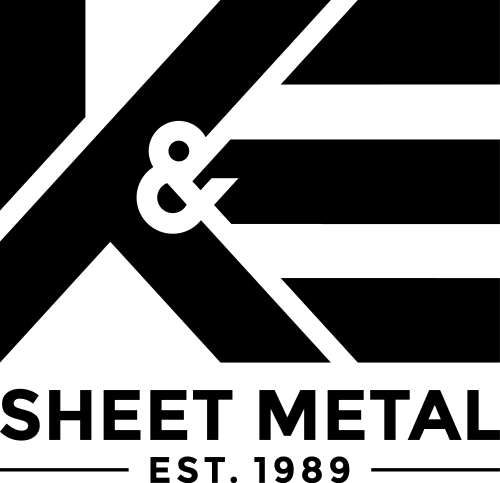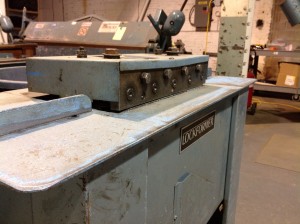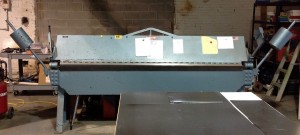Since the beginning of the year I have dredged my brain for answers to the question, how to expand our business. The process has been rocky at times, my therapist helping with the majority of those situations, distraction taking care of the balance. However, I have found that being positive and stopping my obsession with perfect timing has made the job much easier to deal with.
Our company is small. If you have read any of this blog in the past, you know this. I have wrestled, through the years, with ideas of how to expand our business, making our minuscule sheet metal fabrication shop bigger. Able to handle larger residential and light commercial projects, but keeping the integrity and intimacy of the shop my father and I currently run. There are plenty of union commercial shops in this area to take the much larger commercial work that I, as a company owner, never wanted in the first place. However, being able to fabricate a larger and quality capacity for our target market is an advantage I would love to have.
When the housing markets shit the bed I learned more in those few years about myself and our business than ever before. Depression from personal and business issues led me and my anxiety to seeking therapy, understanding what I needed in my life to thrive. Since then I have made a concerted effort to be positive, especially in my home life as a whole. Any issues in your personal life will fracture any motivation you may have to make your business a success. I realized this after 34 years on earth and 15 years in business, but it's never too late. There is plenty of time to create a successful business, on the back of what already exists. Something my father and I can be proud of.
The question of how to expand our business looks different to me now than it did a few short years ago. Things are clearer and I know that I must have goals, making strides to build on the foundation my father and I have already built, no matter how small. Keeping our already solid customer base is key, but technology and organization must be something we focus on to satisfy an old and new, growing customer base.
I have been researching and reaching out to find information on the best way we can accomplish our new found goals. Something I never did when I was struggling with ideas on how to expand our business, finding it easier to stay hidden inside an already comfortable cocoon of anxiety and fear. Not anymore.
Don't let the fear of success drain the opportunities that may await.
When I sat in my office, thoughts circling with ideas of how to expand our business, I left every night frustrated and fearful of the next step. K & E Sheet Metal is not a successful business on paper at this point. We are a good business, working hard everyday to produce quality sheet metal fabrication and customers happy with their new furnace or air conditioning installation. We have a lot to learn, which is tough to say for a functioning business of 23 years and counting.
Finding our niche and focusing on goals is what needs to be thought about before leaving the shop each day. Answering that question of how to expand our business and becoming the company we wanted years ago, but never had the courage to pursue is the road we need to follow. There will be tight bumpy corners along the way, but positive thoughts, hard work and focus will make the trip a little easier to navigate.






